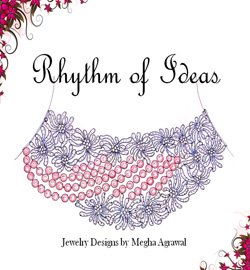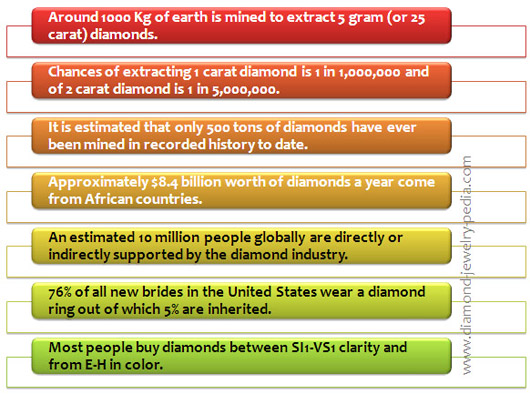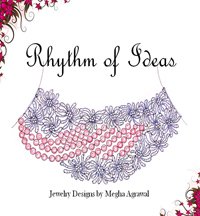Diamond Facts
Generally, when we talk about Diamond, the first picture that comes in front of us, is of a bright sparkling stone. But, not many of you might be aware of following interesting diamond facts:
- Diamond was discovered approx. 3000 years ago in India along the banks of rivers Krishna & Godavari. Till 18th century, India was the only source from where diamond was exported world over.
- It takes around hundreds of million to couple of billion years (age of earth is 4.5 billion years) for a natural diamond to reach its final state. While, it takes only a couple of weeks to create Synthetic Diamonds (man-made diamonds) in laboratory.
- There is a very common misconception that diamond is forever. Actually, diamond being unstable form of Carbon, degrades to Graphite (pencil lead) i.e. another form of carbon. Yes, you read it correctly. But don't worry, suddenly one morning your diamond ring will not change into a graphite ring :). This is because it takes few billion years for diamond to change its form.
- When we say diamond is the hardest substance, it means that it can’t be scratched by any material other than a diamond. It doesn't mean that diamond can't be broken into pieces. Read more in Hardness of Diamond.
- Around 1000 Kg of earth is mined to extract 5 gram (or 25 carat) diamonds. And out of total extracted diamond, only 20% is of gem quality (i.e. used in jewelry) and remaining 80% is used for industrial purpose.
- Chances of extracting 1 carat diamond is 1 in 1,000,000 and of 2 carat diamond is 1 in 5,000,000.
- If all the diamonds ever polished since the beginning of time were to be gathered, they would fill only one double-decker bus.
- Diamond is mined in some 25 countries on every continent but Europe and Antarctica.
- Diamond Carat is the measuring unit for diamond weight (1 carat = 0.2 gram). Gold Karat is used to denote purity of gold, i.e. percentage of pure gold in the piece of gold. As a benchmark, 100% pure gold is termed as 24 Karat gold. Read more about Diamond Carat.
- There is a curse associated with the famous Koh-I-Noor diamond which was discovered in 1306 in Andhra Pradesh. A Hindu text states that "He who owns this diamond will own the world, but will also know all its misfortunes. Only God, or a woman, can wear it with impunity". Well, the saying goes well with Queen Victoria and successive queens who have successfully enjoyed the beauty of this stone. On the other hand, its men owners have always been the victims of misfortune.
- The Cullinan diamond was the largest rough diamond ever found and was 3,106 carats.
- It is a common assumption that all diamonds are white. This is not the case. Impurities give the diamonds a blue, orange, red, yellow, green or black shade. The rarest shade of diamonds would be the vivid blue, pink or green diamond.
- Diamond color grades (D,E,F etc) are applicable only for White Diamonds and NOT for Fancy Colored Diamonds. To know more about difference between White Diamond and Fancy Colored Diamond.
- Diamond dusts are used in number of skin care products as exfoliates (used to remove dead cells from skin).
- During the 13th century, there was a law in France according to which only kings could wear diamonds.
- The first recorded diamond engagement ring was given to Mary of Burgundy from Archduke Maximillian of Austria in 1477.
- In the year, 1994, Pauline Willemse cut a diamond that was 50 times smaller than the head of a ballpoint pen. This was the world’s smallest diamond.
- Diamond wasn't associated with love & romance until 1940's when De Beers started advertising diamond as a perfect jewel for engagement and wedding rings.
- Inheriting the belief from India mythology, Romans believed that diamonds had the power to ward-off evil and wore them as talismans.
- Almost half of the diamonds available in market are in I clarity range (I1, I2 & I3) which is the poorest clarity grade.
- Flawless (FL) clarity grade diamonds are extremely rare and expensive. So, you will hardly find these stones in jewelry stores. These are usually collectors' items that never comes in market.
- Industrial Diamond have blemishes and inclusions even more than I3 clarity grade (poorest clarity). These diamonds are used in machinery, drilling tools (like Dentist Drill). These diamonds are also used in cutting and polishing other diamonds into masterpieces.
- You would have heard jewelers using the term "Eye-Clean". This term is used to describe diamonds with clarity SI2 or higher. It basically means that diamond appears clean and flawless as viewed with naked eye.
- Until 1990, De Beers owned 90 percent of the diamond market. Even if you never entered a De Beers shop, almost every diamond you purchased pre-1990 put money in De Beers’ pockets.
- It is estimated that only 500 tons of diamonds have ever been mined in recorded history to date.
- Do you know why an engagement ring is worn on fourth finger (ring finger)? Well, this custom was derived from the ancient Egyptians who believed that the vein of love ran through the fourth finger and went straight to the heart.
- The slogan "Diamond is Forever" voted as the best slogan of 20th century, was created in 1947. It was used as marketing strategy for diamond.
- Blood Diamonds, also known as Conflict Diamonds, are used in the illegal trading of diamonds to finance conflict, civil wars and human rights abuses in Africa.
- The United States is the world's leading consumer of gem-quality diamonds. In 2008 it consumed about $19 billion in unset gem-quality stones. That was about 35% of the world's gem diamond production.
- There is only one diamond mine in the world where anyone can be a miner. That mine is at Crater of Diamonds State Park in Arkansas. For a few dollars you can mine for a day and keep anything you find. This is the only mine in US which yields just a few hundred carats per year.
- Many of you would be surprised to know that according to 2009 Statistics of Kimberley Process, Russia is the world's leading diamond producing country, followed by Canada, Botswana, Angola & South Africa in the given order.
- Approximately $8.4 billion worth of diamonds a year come from African countries.
- An estimated 10 million people globally are directly or indirectly supported by the diamond industry. Approx 1 million people are employed by Indian diamond industry.
- Space diamonds are common. Scientists first twigged on the possibility of space diamonds when meteorites that crashed into the earth revealed tiny nanometer-sized diamonds. If these meteorites are representative of the material in outer space, NASA scientists say that a gram of dust and gas in a cosmic cloud could contain 10,000 trillion nano diamonds. Unfortunately these diamonds are smaller than a grain of sand – too small for a diamond engagement ring :).
- Shining an ultraviolet light on a real diamond will cause it to glow for a while after the light is turned off. Shining the same light on synthetic diamonds do not have the same effect, making spectroscopy a non-invasive way to determine a diamond’s authenticity.
- Traditionally, engagement rings were the ones adorned with diamonds while wedding rings were left simple and unadorned. But, in the past couple of years there has been a growing plea for wedding rings set with a crowd of diamonds and other precious gemstones.
- In Botswana, the revenues from the diamond industry enable every child, to age 13, to receive a free education. This aid is necessary due to insufficient tax revenue to provide free public education, the way it is provided in the U.S.. After the age of 13, the government pays approximately 95% of educational expenses.
- The largest diamond in the universe is an enormous chunk of crystallized carbon, 4000 Km in diameter and 50 light years away from earth in the constellation Centaurus. Reportedly, it weighs 10 billion trillion trillion carats. According to scientists, this diamond is the heart of an extinct star that used to shine like the Sun. Imagine the number of engagement rings that could be made out of that rock!
- In the 1700’s two chemists, Lavoisier and Priestly, were able to cause a diamond to burn by using a magnifying lens to focus sunlight on the gem. Yes, diamond can be burnt to ash at a temperature of 760 degree centigrade or higher.
- Do diamonds glow in the dark? Some do. The Red Cross Diamond is one of those. It’s a 205.07-carat, cushion cut, canary yellow diamond from a rough stone of 375 carats found in a Kimberly mine in 1901. The top facet includes a Maltese cross. After exposure to light, the Red Cross Diamond will emit the absorbed rays, effectively glowing in the dark.
- Gold in its purest form (24 Karat) is very soft. That is why diamond is preferably NOT set in pure gold jewelry. Instead, diamond is set in 18 Karat and less pure gold to enhance the durability of jewelry.
- Currently, diamond certification methods are quite subjective and every certification lab (GIA, IGI etc.) have their own benchmak. But experts reckon that within next decade there will be machines available to grade color, clarity and size. This will definitely eliminate subjectivity in diamond grading and certification.
- A LARGE DIAMOND IS ALWAYS WORTH MORE THAN A SMALL DIAMOND IS A MYTH. Truth is the Size is only one of the criteria by which a diamond can be judged. A small, high-clarity, high-color diamond can cost more than a large, low-clarity, low-color diamond.
- Rapaport is the largest manager of diamond data in the world. RapNet – the Rapaport Diamond Trading Network has daily listings of over 700,000 diamonds valued at over $5 billion with over 5,900 members in 75 countries. The Rapaport Group maintains its own offices in New York, Las Vegas, Antwerp, Ramat Gan, Mumbai, Surat, Hong Kong and Shanghai. These offices provide timely information about market developments and pricing trends.
- ABN AMRO is the leading bank in the world diamond industry, accounting for approximately 25% of the total financing of the industry worldwide.
- 76% of all new brides in the United States wear a diamond ring out of which 5% are inherited.
- 1 carat = 100 points, so a 75-point diamond would weigh 3/4 of one carat. It’s not a diamond with 75 points on it, as some people think.
- The average diamond size purchased in the U.S. is 38 points (i.e. just over 1/3 of a carat).
- If the diamond is clean to naked eye, then it’s the cut of diamond that imparts maximum sparkle and brilliance in diamond and not its high clarity grade. Read more in Clarity Grade Selection.
- A brilliant round diamond hides color the best and is less likely to reveal a lower color grade in its corners because it has no corners. Lack of corners also makes it a more robust stone and less likely to chip than the pointed tip of a pear or marquise diamond.
- Most people buy diamonds between SI1-VS1 clarity and from E-H in color. G color diamonds at VS2 level are the most popular.
- Diamonds without inclusions are extremely rare and very expensive. De-Beers estimates that only one in seven million diamonds recovered will produce a 1 carat D flawless polished stone. Most diamonds used in jewelry fall into the VS (very slightly included) or SI (slightly included) categories. To detect most inclusions you would need to magnify the diamond.
- In the case of gemstones, some gemstones are heavier than others. Rubies for instance, are denser than diamonds, so a 1 carat ruby will be smaller than a 1 carat diamond.
- Diamonds are rarer and more expensive at higher carat weights, which is why three 1/3 carat diamonds are collectively worth less than one 1 carat diamond. You can use this to your advantage and opt for a three stone ring with smaller diamonds rather than a ring with a larger center stone. Read Carat-Price Relationship of Diamond.
- As a rule of thumb, it takes a 3 carat rough to produce a good quality 1 carat cut stone. Often, poorly proportioned diamonds are the result of a diamond cutter trying to make a 1 carat stone from a 2 carat rough.
- Irrespective of the brand name and source of origin like De Beers, Argyle etc, it is important to note that diamond will always we evaluated on the basis of 4 Cs.
- Later ads by De Beers told consumers to hold onto their family's diamond jewelry and to cherish them as heirlooms. This strategy helped in reducing no. of people selling their diamonds back to jewelers or to other people which increased the demand for new diamonds. This helped De Beers in gaining more control of diamond market.
- A bonded diamond is a natural diamond that is fully warranted by the jeweler and covers breakage, buy back, and exchange.
Return from Diamond Facts to Diamond Jewelry Homepage
I hope you'll not mind sharing this on Twitter, Facebook and with everyone else :)
Feel free to share if something is in your mind and want it to be covered on this site.
My Newsletter
Did you liked this article? Sign-up my FREE weekly newsletter and I'll send you more awesome new additions on this website along with latest jewelry happenings around the world, and download my Jewelry Design Album for FREE!
 |
|
Have something to say? Post Your Comment



